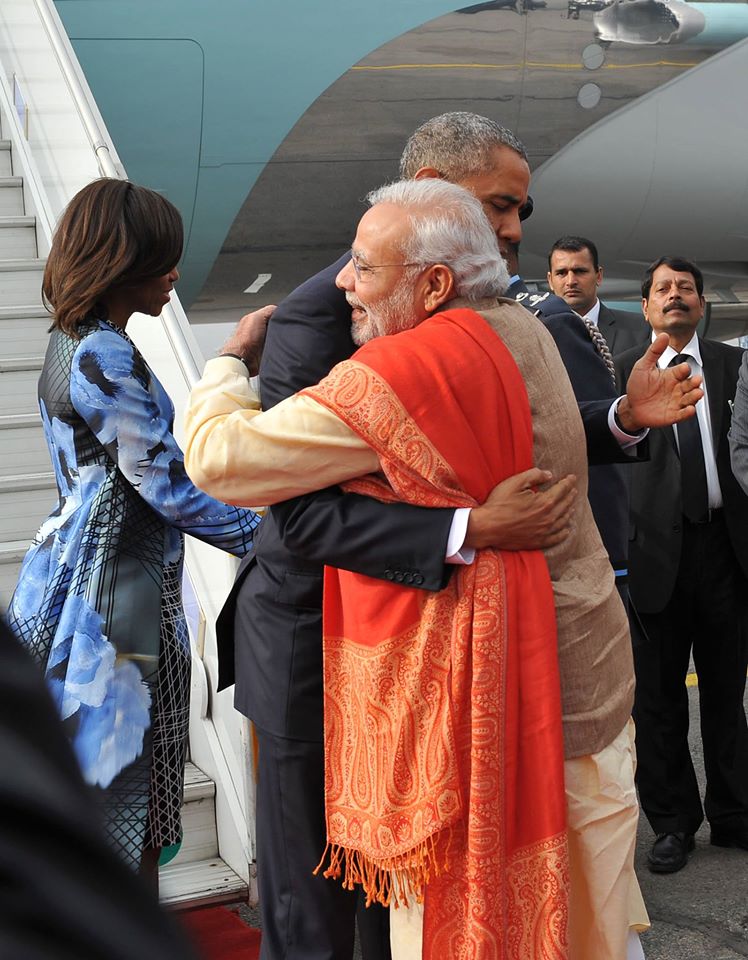The most incredible thing about US president Barack Obama’s most recent three-day trip to India, which began today, is that Indian prime minister Narendra Modi can pull off such a sincere welcome less than six weeks after citing Russia as India’s top defense partner, even as he and Obama would later announce a new US-India nuclear energy deal.![]()
Has any world leader had such a strong first nine months in office from a geopolitical strategic perspective?
Keep in mind that Modi, barred from the United States for nearly a decade due to his alleged role in the anti-Muslim riots in his home state of Gujarat, was not always particularly keen on strengthening relationships with the United States. Instead, on the basis of his work promoting Gujarat, it was always more likely that he would look to China, Japan, Russia and the United Arab Emirates, where he wooed investment to his own state. With his emphasis on turfing out the corrupt and ineffective leadership of the Gandhi family, and with relatively little commentary on India’s foreign policy, no one expected Modi to build so many bridges in such little time.
Within just nine months, Modi has been the guest of honor at a state dinner at the White House, and he packed Madison Square Garden, filled with tens of thousands of North Americans of Indian descent thrilled to hear from India’s most powerful leader in three decades. By all accounts, Modi and Obama have developed a strong working relationship, unique for an American president who isn’t particularly known for his chemistry with world leaders.
Today, however, Modi has the grin of a prime minister, who, despite a decade as a pariah throughout much of the West, now revels in being suited by everyone — not just the United States and Russia, but China, Brazil, Japan, Europeans, Africans. In foreign policy, Modi is running a positive-sum game. What other countries in the world could manage to nurture such close relationships, strategic and otherwise, with Russia and the United States simultaneously? (Serbia, maybe? The United Arab Emirates? The list isn’t incredibly long.)
Modi, whose social media use has been nimble, was quick to post a photo of his warm welcome for Obama early Sunday morning. But one look at his Facebook and Twitter feeds, which often border on the campy side, show that he doesn’t just delight in Obama — in 2015 alone, he’s featured shots with German finance minister Wolfgang Schäuble, Israeli agriculture minister Yair Shamir, Astrakhan provincial governor Alexander Zhilkin, Iranian presidential adviser Akbar Torkan, Canadian immigration minister Chris Alexander, Macedonian prime minister Nikola Gruevski, among many (many) others.
What’s becoming clear is that while Modi has taken only a gradual approach to reforming India’s government, slowly introducing changes to make the bureaucracy more efficient, the theme of Indian pride is constant in the Modi approach to both domestic and foreign policy.
In his own understated way, with very little nationalist fanfare, one of the most important emerging goals of the Modi administration is to force India to take itself more seriously and to give Indians (both at home and abroad) a country in which they can take pride. That’s no less true on the world stage as it is at home, and whether it involves receiving leaders like Obama, Russian president Vladimir Putin and Chinese president Xi Jinping, or a pet project to clean up the sacred Ganges River, which runs through Varanasi (Benares), the holiest city in India — and, not coincidentally, the constituency that Modi chose to contest in last spring’s election.
It’s in the way that Modi is deftly flexing Indian muscle in south Asia, especially in its subtle embrace of Bhutan, whose prime minister Tshering Tobgay takes a more pro-Indian approach (at China’s expense). Earlier this month, Sri Lanka elected Maitripala Sirisena as its new president after he promised to slow down his predecessor’s accelerating embrace of Beijing. Even as Modi welcomes closer cooperation with China, he is making it clear that he intends India to stand as an Asian counterweight to China as well.
When he railed in last spring’s election that he wanted to prioritize ‘toilets, not temples,’ it wasn’t just that Modi was telescoping that he cared more about development than prioritizing the hindutva religious values of his Hindu-rooted conservative party, the Bharatiya Janata Party (the BJP
Though Modi’s reform efforts have been slower than anticipated, his efforts to transform India’s self-image have not. With the economic tailwinds of vastly cheaper oil and gas in 2015, Modi may benefit from a short-term economic boom that could facilitate economic reforms.
The last BJP government was swept out of office in 2004 when Indians didn’t believe prime minister Atal Bihari Vajpayee that India was truly ‘shining.’ In both form and substance, Modi’s chief first-term project as prime minister might well be to make India and Indians shine for the whole world — and, though there’s some legitimate argument over his economic policy acumen in Gujarat, there’s no doubting that he raised the state’s profile in his decade as chief minister.
